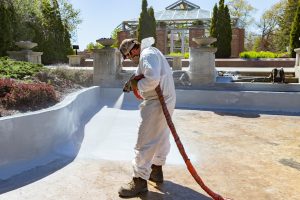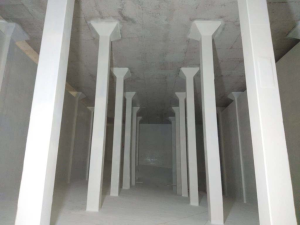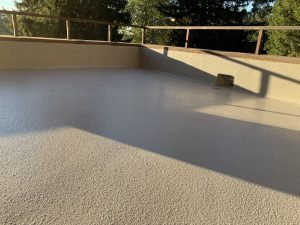Polyurea technology is not new to the pipelining industry, with basic applications dating back more than 30 years. Much of this work was performed by hand spraying or simple robotic systems for individual joint segments of pipe.
In the United States alone, it is estimated that over $1 trillion will be required over the next 25 years to restore buried water and wastewater lines due to age and deterioration. Almost $350 billion will be required to restore potable and drinking water lines. This does not include all of the buried and in-use steam and chemical pipelines affected by age.
While it is often assumed that corrosion is a large cause of pipeline failures, pipeline flow restriction due to tuberculin-type growth is also a major concern. This growth can greatly reduce the pipe Pipeline Rehabilitation: Advances in Polyurea Spray Application diameter, thus affecting liquid flow through the pipe, flow backup, and in the case of potable water lines, poor water quality, and unhappy consumers.
Current pipe materials used in most utility sectors in the U.S. are composed of cast iron, ductile iron, concrete, steel, some asbestos cement, or PVC (polyvinyl chloride). They will differ by region of the country. It is noted that over 65 percent of all municipal pipeline systems are over 30 years old, with a vast majority being over 50.
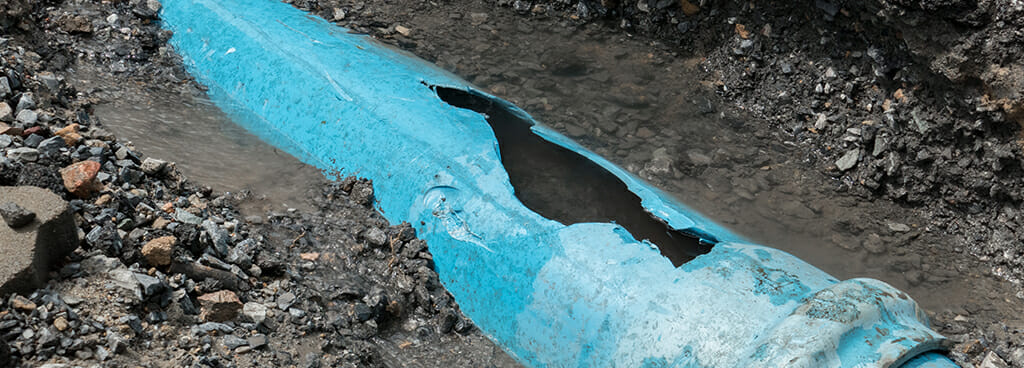
As corrosion has been the leading cause of pipeline system failures, PVC has been shown to have the lowest failure rates. The traditional method of addressing these failures has been to dig up and replace the damaged pipe. This creates a very large footprint for excavation, is disruptive, and can be costly. Given that many pipeline systems are a complete maze, crisscrossing with various other pipelines, many of which are under buildings and other structures, this can be inefficient.
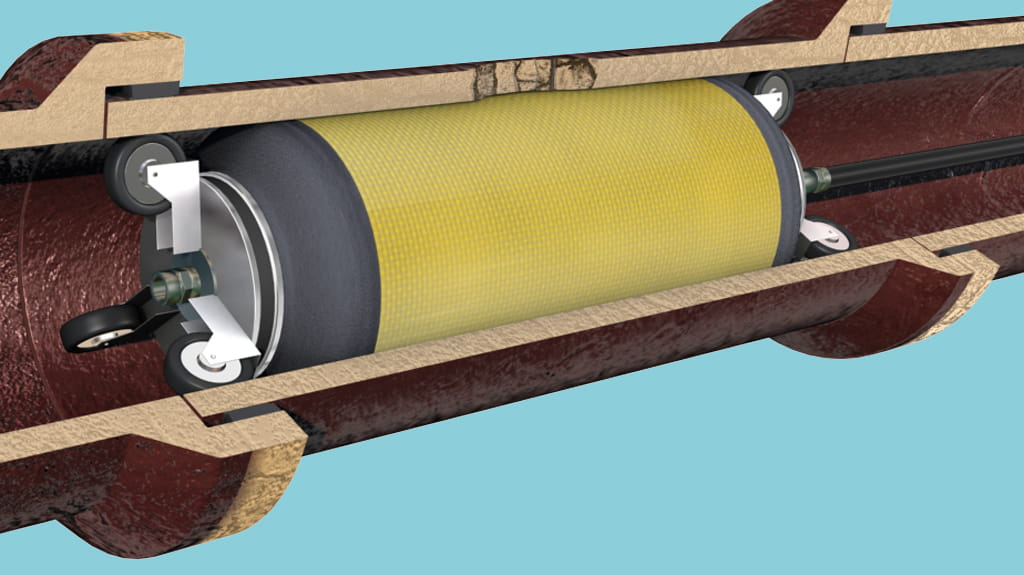
Trenchless Rehab Methods: Alternatives to digging up and replacing pipeline systems are several trenchless technology options gaining use and acceptance. These options can save up to half of the overall cost compared to traditional trenching methods, and as a result, are advantageous to consider. Pipe Bursting and Jacking This method employs a slightly smaller diameter pipe into the existing host pipe sections. The forced pipe can include steel, polyethylene (PE) or polypropylene (PP), or PVC. This method requires a large excavation “footprint” for access to an end of the existing pipe, but not complete excavation. This process is more suited for straight runs and does not work well for pipe bends.

Cementitious Lining: This process provides a very economical advantage, and we all know that concrete is fairly sound. However, this method cannot be used in aggressive (highly acidic) environments or where highly abrasive or erosive action is present because the concrete can crack over time. To employ the cementitious lining method, cleaning the host pipe is required, followed by minimal surface preparation procedures.

Cured-In-Place Pipelining (CIPP): CIPP is an emerging technology introduced about 20 years ago and has been used extensively. A polymer-impregnated “fabric sock” is inserted into the end of a pipe section and formed to the existing pipe using hot air or hot water. The typical polymer systems are either epoxy or vinyl ester-based materials. This process covers lateral intrusion but does allow for pipe bends. Because the fabric sock is of one size in the run, varying pipe diameters cannot be completely accommodated. Annular space between the CIPP and the host pipe does exist and can lead to leakages.
Sprayed-in-Place Pipelining (SIPP): A newer concept than CIPP employs robotic application heads to deposit liquid, thin- and thick-film lining systems to the prepared pipe’s interior surfaces. This procedure uses polymer technologies such as epoxy, vinyl ester, polyurethane, and Polyurea. Because the lining is deposited in a spray fashion, lateral tie-ins remain open and clear. This process can accommodate various pipe diameters as well as radius bends. SIPP and Polyurea The use of the polyurea spray technology have proven to be a successful coating type for SIPP utilization for various coating and lining applications given its fast reactivity and 100% solids formulation base. One method, hand spray application, is well suited for large diameter pipe systems but not very practical for smaller diameter pipe sections. A recent study has shown that when the galvanized corrugated pipe is coated or lined with a general polymer or “plastic” system, 75-year life expectancies can be realized.
A simple robotic spray head or a retractable lance spray gun can be used for relining joint sections of pipe. The pipe is rotated, and the spray lance is pulled from the pipe. This is a very practical approach and is employed using polyurea systems and epoxies, polyurethanes, and other coating types. One area of great concern here is using more elastomeric systems and the point of termination in the pipe. For flanged pipe, the material must be carried out and onto the flange. Otherwise, liquid flow’s hydraulic effect could disband the applied lining, causing collapse and plugging inside the pipe.

Polyurea-lined pipe joints have been in service for approximately five years. In contrast, the carbon steel pipe is typically rotated 90 degrees at flange areas every 3 to 6 months due to erosion. Robotic In-Place Polyurea Application To effectively rotate a section of pipeline that is already in the ground, the polyurea system is dispensed onto a spinning disk, and the centrifugal force broadcasts the material onto the pipe. This method was successfully used in 1989 by the Texaco Chemical Company. The polyurea system used had a 3–6 second gel time. This concept was employed to have an entry-free installation.
A variety of configurations have been employed in pipeline polyurea applications depending on the pipe’s internal diameter. These include rotating a spray gun on a pulled cart; multiple spray guns attached to a large, slow-spinning plate (primarily for vertical work); and spray guns attached to a swinging arm for ride-on type units in large diameter application work. The most common methods used to deposit the fast set polyurea (PUA) are a high revolution-per-minute (RPM) spinning cup or a high-pressure, static mix tube fitted with a hollow cone spray tip. For larger diameter pipework, a robot with rotating plural component spray guns should be used. Each of these two methods has its own set of characteristics. The spinning cup method produces oscillation movement that simulates hand spray.


In some cases, depending upon the pipe substrate’s condition, a secondary pull through in the opposite direction might be required to ensure uniform coverage. The proportioning equipment used to feed the spray head is standard high-pressure, high-temperature plural component equipment. The hose bundle can be up to 600 feet and operates from a computer-controlled hose reel so that the speed of pull can be adjusted to provide the required applied film thickness. Closed-circuit TV enables real-time viewing and recording of the installation work. Polyurea Types Used in SIPP Depending upon the pipelining work, various polyurea systems can be used to meet specific application requirements.
In conclusion, The use of polyurea technology is a good solution for pipelining application work. The use of a thick-film system conforms to the pipe’s interior surface with no annular space. This technology’s last set allows for the thickness build of lining material in a single pass and rapid return to service. If you would like to get in contact with an expert in this field, we suggest visiting ArmorThane. With over 30 years in the industry, they are the go-to company when it comes to pipeline rehabilitation with polyurea.


